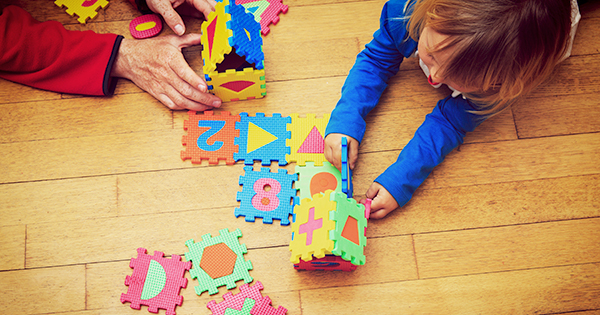
This post has been updated as of May 2018.
Every child learns differently—some prefer looking at photos, others like to listen, and some like to move around. That’s why it’s important for early childhood educators to understand different learning and teaching styles to benefit all of their students.
Here are a few learning styles and strategies that you can explore in your own classroom.
Most common learning styles in early childhood
Although different learning styles might develop as children get older, students generally learn in one of three ways:
- Visual: Students with a visual style of learning will remember information best when presented with pictures or graphics. Visual learners will often recognize numbers and letters better than peers with another type of learning style.
- Auditory: Auditory learners are best able to understand when they hear information. In early education, auditory learners are more likely to prefer listening to stories or telling stories as a way to understand information.
- Kinesthetic: Students with a kinesthetic learning style learn best by manipulating objects and engaging in physical activities to learn the material.
As children continue to learn reading, writing, logic, and socializing skills, they may adapt to different learning styles. But these changes often won’t develop until later and are less common during early childhood development stages.
Other styles of learning
While the average student in early education learns through one of the styles listed above, some may learn in different ways. Children can also develop alternative learning styles over their educational experience.
- Verbal: In early childhood education, verbal learners and auditory learners have similarities because they learn best from stories. As children get a little older, verbal learners prefer learning through reading, writing, and listening to information. Auditory learners focus on music and sound, but will not necessarily enjoy reading or writing.
- Logical or mathematical: These students understand math and science better than other students, and focus on finding a pattern. As a teacher, you could use reasoning to provide answers that help these types of students learn information.
- Social: Interaction with classmates is also a contributing factor in learning. Some students learn better in group settings—something to keep in mind when arranging your classroom. On the flip side, others are solitary learners. They understand information best when allowed to work out the problems without classmates offering input. You’ll notice that these children prefer playing alone rather than spending time with peers.
Develop engaging lesson plans
Early education is not always easy to manage, but a combination of teaching styles is possible to incorporate into lesson plans. You can engage the entire class by providing visuals, telling stories, and offering activities that explore the curriculum your students need to learn. To start, try incorporating the three most common learning styles in lesson plans and see how your class responds.
Early childhood education provides a solid foundation for a successful academic career, and it’s all because of you. Children need to explore different ideas and learn the basics of numbers, letters, and relationships. Providing an environment that incorporates several learning styles will help all of your students stay engaged, excited, and ready to learn.
Categorized as: Tips for Teachers and Classroom Resources
